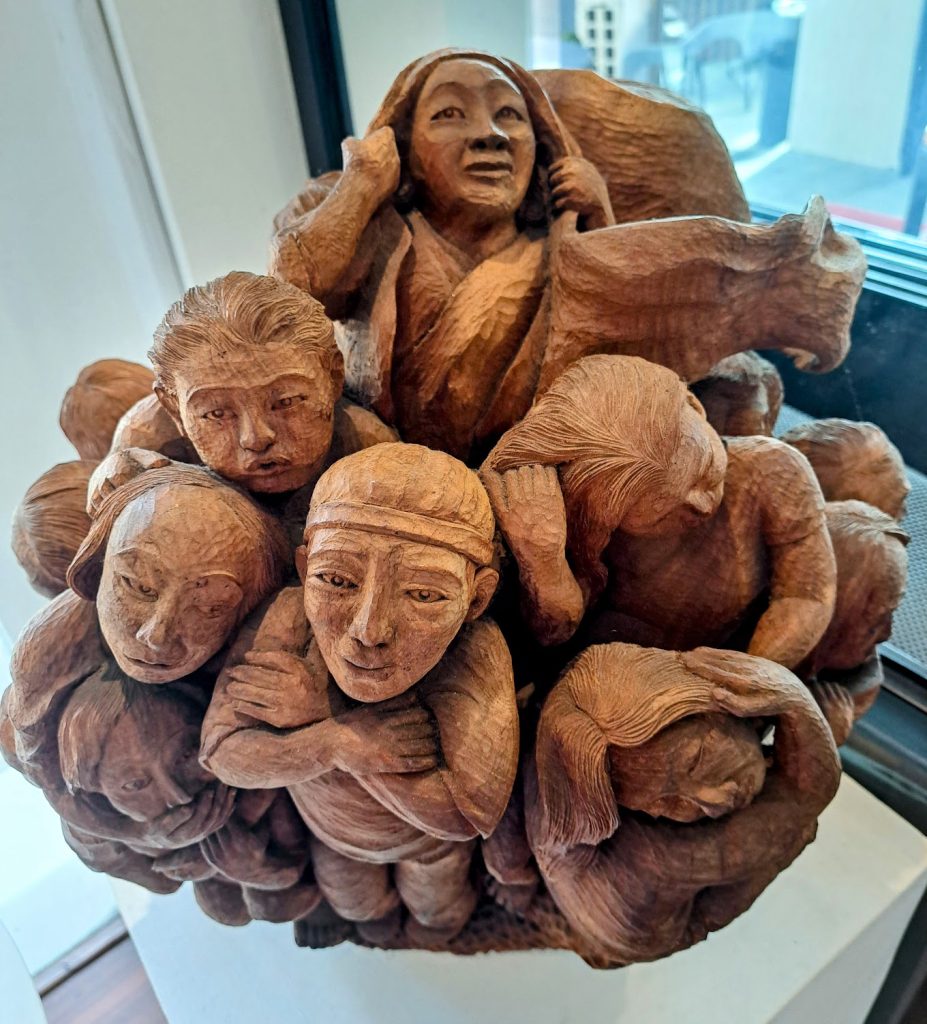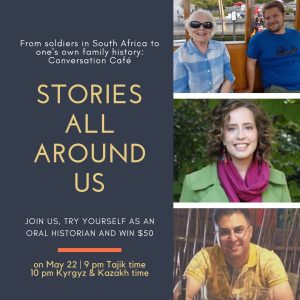36 Welcoming All Voices: Listening to Lived Experience

Sculptor Taman Pande Ketut, Iraga Coffee Shop, Ubud, Bali
“Every head is a world.” – Cuban Proverb
Usually when we want to learn something new, we turn to experts or google for advice and information. Another option, honed by narrative therapists, is to turn to humans and learn from their stories and experiences. This activity was created through watching Sarah Beth Hughes and Jonny Morris masterfully facilitate conversations with many different individuals and groups. Using curiosity, empathic listening and respectful questioning, this rich and layered storytelling process allows people with lived experiences to share their valuable expertise.
Purpose
The purpose of conducting panel discussions with people with lived experiences, is to bring forward the voices of people that are often marginalized and to allow others to enter their worlds and learn from their stories and perspectives.
Learning Objectives
Participants will:
- Listen to life stories related to a relevant theme.
- Reflect on the insights shared and how they connect with their own experiences.
Activity Directions
Set-Up: Room should be organized so that the facilitator and panelists have a small curve of chairs at the front of the room where they can all see each other. I have sometimes brought a small area rug to add cosiness to the place where the panelists are speaking together. I have seen this activity done in small seminar rooms and in big auditoriums with as many as 100 people.
- Choose topic: Decide on an issue that is relevant to your community.
- Identify panel members: Talk to people in your community who have personal experience with the topic you want to explore. Invite 2-4 people to be on your panel.
- Chat with members ahead of time: Talk with each person ahead of time and share with them the questions you are considering asking. Let them know that it is totally fine to let you know either before or during the discussion if they do not want to answer particular questions. Check if they think there are other aspects of their life story that you have missed, and they would like to share.
- Welcome: Start the panel discussion by welcoming the witnesses and explaining how the next hour of dialogue will unfold. Witnesses might be everyone listening to the conversation, or with bigger groups, it can be helpful to have selected a reflecting team ahead of time. The facilitator can address particular questions to individuals and summarize the themes that are emerging. When these panel discussions are fully engaging, the audience feels like they are listening in on an intimate, frank kitchen table conversation where ideas and insights flow and interconnect.
- Reflections from broader audience: After 20 – 30 minutes of discussion, tell the panelists that they can rest now and listen to the reactions and emotions that have been sparked by their stories. Turn to the audience, or a small reflecting panel that has been selected ahead of time, and ask them what resonated with them from the stories they have just heard. This allows the panelists to hear the impact of their experiences and often new layers of meaning emerge.
- Panelists last thoughts: After 15 minutes of reflections, come back to the panelists for their final thoughts: “What was it like to hear how other people connected to your experiences? What struck you about their reactions? Are there any last thoughts you would like to share?”
- Summary of themes: End the conversation with the facilitator sharing how this conversation affected them personally and possibly touching on some of the key themes that have surfaced. The event usually closes with acknowledgement and gratitude for the bravery and authenticity of the participants.
Case Study #1 Why bother talking to a counsellor?
When I was first living on a Central Asian campus, counselling was a relatively new service in that region. Most students did not have counsellors in their previous schools or communities. To explore the purpose and impact of counselling, I invited three faculty and staff who had spent time with counsellors at their university campuses in Canada and the Philippines. I spoke with all three ahead of time to make sure that they were comfortable talking about their counselling experiences.
I asked them the following questions:
- Can you tell us why you decided to visit your university counselling services?
- How did you go about making an appointment?
- How did you feel before your first appointment?
- What was your experience of talking with a counsellor?
- What was your experience like compared to what you thought it would be like ahead of time?
- From your perspective how is visiting a counsellor different from going to talk with a teacher or doctor?
- What did you learn about yourself during your counselling appointments?
- What suggestions would you give to students who might be considering talking to a counsellor?
- Is there anything that I didn’t ask about that you would like to share with our students?
The three panelists had very different experiences and in my role as facilitator, I summarized themes and some of the unique perspectives of the panelists.
After we finished our conversation, I turned to the group of 60 students and asked them what resonated with them or surprised them in what they heard.
Case Study #2 Interviewing Students who had experienced diversity and inclusion challenges on campus
In a first year university life skills seminar, we were introducing the topic of Diversity and Inclusion. To introduce this unit, I invited a student who identified as trans, a person dealing with anxiety, a student who identified as lesbian and a student from Syria who was sometimes isolated because he didn’t speak the dominant language on campus. I asked them the following questions about their experience:
- Could you share with us an experience you had on campus where you did not feel included?
- What are your thoughts on why these situations occurred?
- How did you handle these experiences of exclusion?
- How did they impact your emotions and behavior?
- What would you like this group of people to know about you?
- What can people do who want to get to know you better or be more inclusive, but are not sure how to go about that?
- Any other suggestions towards making this campus more welcoming and inclusive?
- Any last thoughts or something you want to share that we have not covered?
Note: When we finished this panel discussion, the class broke into spontaneous applause as they had been moved by the brave stories and commented that they had a new appreciation of the realities of people that they had not talked to before.
The following video provided an opportunity for students in the trades with disabilities to tell their instructors: “What I Wish They Knew.” I approached students on my counselling case load and was surprised to discover nearly everyone I asked, wanted to be a part of this video project. I discovered that people love telling their stories, being understood and sharing their tips on how to help others.
Here is another video that we made at Selkirk College that invited different artists and arts students to share their experiences of keeping creativity alive. This was another example of turning to people with lived experience for advice and tips on what has helped them flourish:
Staying Juicy: Keeping Creativity Alive
Online Variation on Welcoming Diverse Voices
 During the pandemic, student life teams at the University of Central Asia were tasked with finding ways that the community could still connect and socialize together. One initiative was to host conversation cafes online. This particular cafe, “We are Stories,” featured discussions about how to use oral history methods to interview family members. Because most students were still in lockdown in their family homes, we thought it could be a time to capture the stories of parents and grandparents and deepen awareness of their family history. This online evening of storytelling led to a family story competition. Students submitted personal essays where they used oral history methodology to interview a family member and document their story.
During the pandemic, student life teams at the University of Central Asia were tasked with finding ways that the community could still connect and socialize together. One initiative was to host conversation cafes online. This particular cafe, “We are Stories,” featured discussions about how to use oral history methods to interview family members. Because most students were still in lockdown in their family homes, we thought it could be a time to capture the stories of parents and grandparents and deepen awareness of their family history. This online evening of storytelling led to a family story competition. Students submitted personal essays where they used oral history methodology to interview a family member and document their story.
